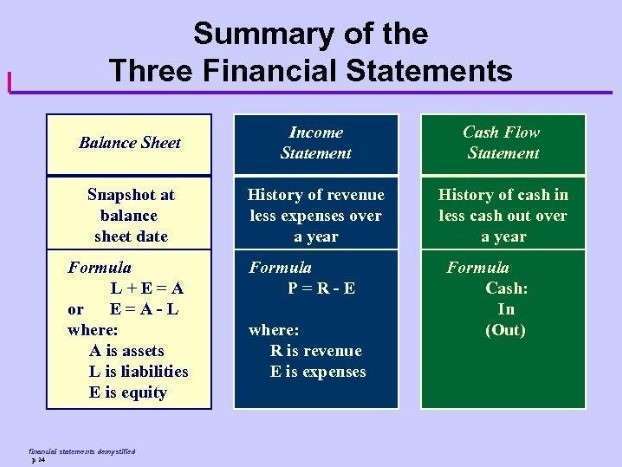Respective approaches for AAA get defined and staffed in the context of mobile services, when using smart phones as e.a. Intelligent agents or smart agents for automated capture of accounting data . Since smaller companies use fewer resources and do not have many activities/operations, the cost of transactions tends to be low. Thus, it is difficult for smaller companies/organizations to adapt ABC for their products. Also, with the necessary information about activities, management can make informed decisions that help reduce costs without compromising product or service quality.
Requirements for Activity Based Costing
- An organization using a traditional costing system in an industry would produce reports that are different from the ones issued by the organization using ABC.
- Many researchers have worked to find more accurate data that management can use to make better decisions in various circumstances.
- This cost accounting method recognizes the relationship between costs, overhead activities, and manufactured products, assigning indirect costs to products less arbitrarily than traditional costing methods.
- You’re relying on data that your employees give you, such as how many hours a machine ran or how many hours an employee worked (humans aren’t always accurate).
- Under activity based costing, $200,000 of the overhead will be viewed as a batch-level cost.
- Each cost pool is then filled with individual cost objects (items) like electric, water, gas and all the rest that goes into making a product.
The problem is that traditional costing methods can generate waste and keep companies from earning the profits they desire. Activity-based costing is a more specific way of allocating overhead costs based on “activities” that actually contribute to overhead costs. In job-order costing and variance analysis, overhead costs are applied based on a specific cost driver such as labor hours or machine hours. Activity-based costing (ABC) is a more specific and more accurate way of assigning factory overhead to manufactured goods versus using a single factory or multiple departmental rates.

Activity-Based Costing: A Real Example
- The last thing Trump needs is for swing voters to catch a glimpse of him ranting about how he loves January 6 to a throng of bloodthirsty bigots.
- You now have a precise idea of your costs, which obviously leads to a more exact budget and clearer business planning.
- Non-direct costs are the overhead costs, such as rent, property taxes, accounting and administrative costs and all other costs not directly related to the production of our product.
- The overhead costs assigned to each activity comprise an activity cost pool.
- Cost pools are individual overhead expenses pooled together and relate directly or indirectly to a particular activity or operation used in the production process.
- Activity-based costing is a costing method that identifies activities in an organization and assigns the cost of each activity to all products and services according to the actual consumption by each.
- Although some may argue that costs untraceable to activities should be “arbitrarily allocated” to products, it is important to realize that the only purpose of ABC is to provide information to management.
11 Financial is a registered investment adviser located in Lufkin, Texas. 11 Financial may only transact business in those states in which it is registered, or qualifies for an exemption or exclusion from registration requirements. 11 Financial’s website is limited to the dissemination of general information pertaining to its advisory services, together with access to additional investment-related information, publications, and links. Finance Strategists has an advertising relationship with some of the companies included on this website. We may earn a commission when you click on a link or make a purchase through the links on our site. All of our content is based on objective analysis, and the opinions are our own.

Determine the Cost of Activities
You now have a precise idea of your costs, which obviously leads to a more exact budget and clearer business planning. You can see where your money is being spent and which products are going to make you the most profit. You can compare the true cost of making different products, see if they’re bringing in enough profit and take action accordingly. 300 of these new machines are for your new product, and you want to factor this into working out the overall cost of production to predict if it will be profitable.

This portion of the process is similar to finding the traditional predetermined overhead rate, where the overhead rate is divided by direct labor dollars, direct labor hours, or machine hours. Each cost driver will have its own overhead rate, which is why ABC is a more accurate method of allocating overhead. Activity-based costing calculates overhead (indirect expenses) costs by taking multiple cost drivers (machine setup costs, labor, inspections, utilities, etc.) into account before assigning product costs. Activity-based costing is an incredibly precise method used by large companies needing accurate figures when allocating overhead costs. Traditional and activity-based costing systems are similar in that they’re both used to assign overhead costs to products.
Limitations of Activity-Based Costing (ABC)
Under ABC, the company will calculate the cost of the resources used in each of these activities. Next, the cost of each of these activities will be assigned only to the products that demanded the activities. In our example, Product 124 will be assigned some of the company’s costs of special engineering, special testing, and machine setup.
What is your current financial priority?
Without ABC, the cost per unit is $0.40 regardless of the number of units in each batch. If companies base their selling prices on costs, a company not using an ABC approach might lose the large batch work to a competitor who bids a lower price based on the lower, more accurate overhead cost of $0.37. It’s also possible that a company not abc costing example using ABC may find itself being the low bidder for manufacturing small batches of product, since its $0.40 is lower than the ABC model of $0.46 for a batch size of 5,000 units. With its bid price based on manufacturing overhead of $0.40—but a true cost of $0.46—the company may end up doing lots of production for little or no profit.

We will even show you an example of the math that’s involved (don’t worry, it’s not complicated). If you want to implement an ABC system but don’t know where to start, you’re in the right place. These estimates were made last year and will be used during all of the current year. In practice, companies most frequently set rates for the entire year, although some set rates for shorter periods, such as a quarter. Assume High Challenge Company makes two products, touring bicycles and mountain bicycles.
What are the different types of cost drivers under ABC?
It’s here that you need to take items like utilities, inspections, direct labor costs, research and development, machine costs and purchasing into account. Once you have determined your activities, you can start breaking them down into cost pools. Second, it creates new bases for assigning overhead costs to items, so costs are allocated based on the activities that generate costs, instead of on volume measures—such as machine hours or direct labor costs. However, as the percentages of indirect or overhead costs rose, this technique became increasingly inaccurate, because indirect costs were not caused equally by all products. Consequently, when multiple products share common costs, there is a danger of one product subsidizing another.

Batch level activities are activities that are performed whenever a batch of the product is produced. Product level activities are activities that are conducted separately for each product. Facility level activities are activities that are conducted at the plant level. The unit-level activities are most easily traceable to products while facility-level activities are least traceable. You need to consider the best accounting method of costing for your business. Remember, this ABC formula is most commonly used in manufacturing, where individual products are more easily costed.
